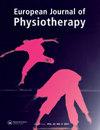The feasibility of an upper limb strength test protocol in children with Duchenne muscular dystrophy
IF 1.1
Q3 REHABILITATION
引用次数: 0
Abstract
Question This study aimed to develop and assess a protocol for evaluating upper limb strength and its association with functional abilities in children and adolescents diagnosed with Duchenne muscular dystrophy (DMD).Design A cross-sectional study.Participants Eleven male individuals diagnosed with DMD (aged 11 to 18 years).Intervention A systematic protocol for assessing the maximum voluntary isometric contraction (MVIC) of the upper limbs using grip and pull dynamometers was developed and conducted in conjunction with the Performance of Upper Limb (PUL) scale.Outcome measures Feasibility was evaluated by appraising the number of participants capable of successfully executing the strength test protocol. Correlations were conducted to examine the relationship between upper limb strength and PUL scores.Results The grip strength assessment was feasible for all participants, while the complete strength testing protocol was feasible for nine, excluding two individuals with non-ambulatory mobility. Significant correlations were found between overall upper limb strength and total PUL scores (rs = 0.742, p = 0.022), grip strength and distal PUL scores (rs=0.733, p = 0.010), shoulder abduction strength and PUL shoulder scores (rs=0.905, p = 0.005), and grip strength and overall PUL scores (rs=0.794, p = 0.004). The middle-level correlation was not statistically significant (rs=0.590, p = 0.094).Conclusion The established strength test protocol demonstrated feasibility among ambulatory participants. However, alternative approaches are essential for those with limited ambulation. The study identified a robust correlation between upper limb strength and functional abilities. Further extensive studies are required to validate these findings.Trial registration The present study is a part of a longitudinal intervention study registered at the ClinicalTrials.gov (NCT03963453).杜氏肌营养不良儿童上肢力量测试方案的可行性
本研究旨在制定和评估诊断为杜氏肌营养不良症(DMD)的儿童和青少年上肢力量及其与功能能力的关系的方案。设计横断面研究。参与者11名被诊断为DMD的男性个体(11 - 18岁)。采用握力和拉力测功仪评估上肢最大自主等距收缩(MVIC)的系统方案与上肢性能(PUL)量表一起开发和实施。通过评估能够成功执行强度测试方案的参与者人数来评估可行性。采用相关性分析来检验上肢力量与PUL评分之间的关系。结果所有参与者的握力评估都是可行的,而完整的握力测试方案对9名参与者是可行的,除了2名非移动能力的个体。上肢总力量与PUL总分(rs= 0.742, p = 0.022)、握力与远端PUL总分(rs=0.733, p = 0.010)、肩外展力量与PUL肩总分(rs=0.905, p = 0.005)、握力与PUL总分(rs=0.794, p = 0.004)之间存在显著相关性。中等水平相关性无统计学意义(rs=0.590, p = 0.094)。结论所建立的强度测试方案在非卧床参与者中是可行的。然而,对于那些行动受限的人来说,替代方法是必不可少的。该研究确定了上肢力量和功能能力之间的强烈相关性。需要进一步的广泛研究来验证这些发现。本研究是在ClinicalTrials.gov (NCT03963453)注册的纵向干预研究的一部分。
本文章由计算机程序翻译,如有差异,请以英文原文为准。
求助全文
约1分钟内获得全文
求助全文

 求助内容:
求助内容: 应助结果提醒方式:
应助结果提醒方式:


